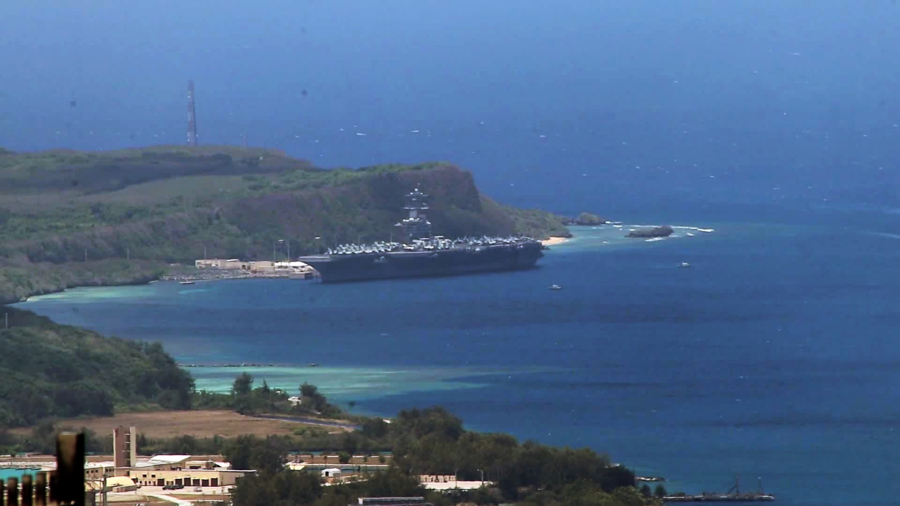Virus-hit carrier USS Theodore Roosevelt is finally back at sea after being benched on the pacific island of Guam for almost eight weeks.
The Navy announced on May 21 that the nuclear-powered ship was underway in the Philippine Sea—although it has left some of the 5,000 crew behind.
“After moving nearly 4,000 crewmembers off ship and cleaning the entire ship from bow to stern, the appropriate number of crew members to operate the ship underway have returned from quarantine after passing rigorous return-to-work criteria,” said the Navy in a statement.
However, according to USNI News, officials say that this will likely be the first of a few shorter sailings before the carrier heads out for a lengthy deployment.
The carrier was on deployment for the 7th fleet in the Pacific when it was hit by the outbreak, and stayed put in Guam after a scheduled stop on March 27.
“It feels great to be back at sea,” said Rear Adm. Stu Baker, commander, Carrier Strike Group (CSG) 9. “Getting Theodore Roosevelt and Carrier Air Wing 11 one step closer to returning to their mission in the Indo-Pacific is a great achievement for the crew.”

In total, around 1,000 crew members tested positive for COVID-19, as the crew was systematically tested and quarantined while the ship was cleaned.
One sailor on the carrier became the first and only member of the armed forces on active duty to die so far from the virus.
The Navy is now using a concept called “scaled manning,” selecting only the crew members for particular missions to come on board.
“We are scaling our manning on board based on our mission requirement,” said Capt. Carlos Sardiello, Theodore Roosevelt’s commanding officer. “Carrier qualification requires fewer personnel than other missions, and bringing fewer sailors on board will enable enhanced social distancing while underway.”
The crew is also enacting other COVID-19-prevention strategies, including wearing masks, medical surveillance of 100 percent of the crew, adjusted meal hours, minimizing in-person meetings, sanitizing spaces, and a simulated medevac.
“It was an unprecedented challenge to get to this point and I’m proud of the Rough Rider Team’s tenacity and resiliency in the face of uncertainty,” said Sardiello. “We are extremely thankful for the dedicated support and hospitality of Gov. Leon Guerrero, her staff, and the people Guam. They have been steadfast and proactive partners throughout. We are also thankful for the efforts of our fellow service members on Guam for their resolute support. We owe them all a debt of gratitude that words cannot express.”
From The Epoch Times


